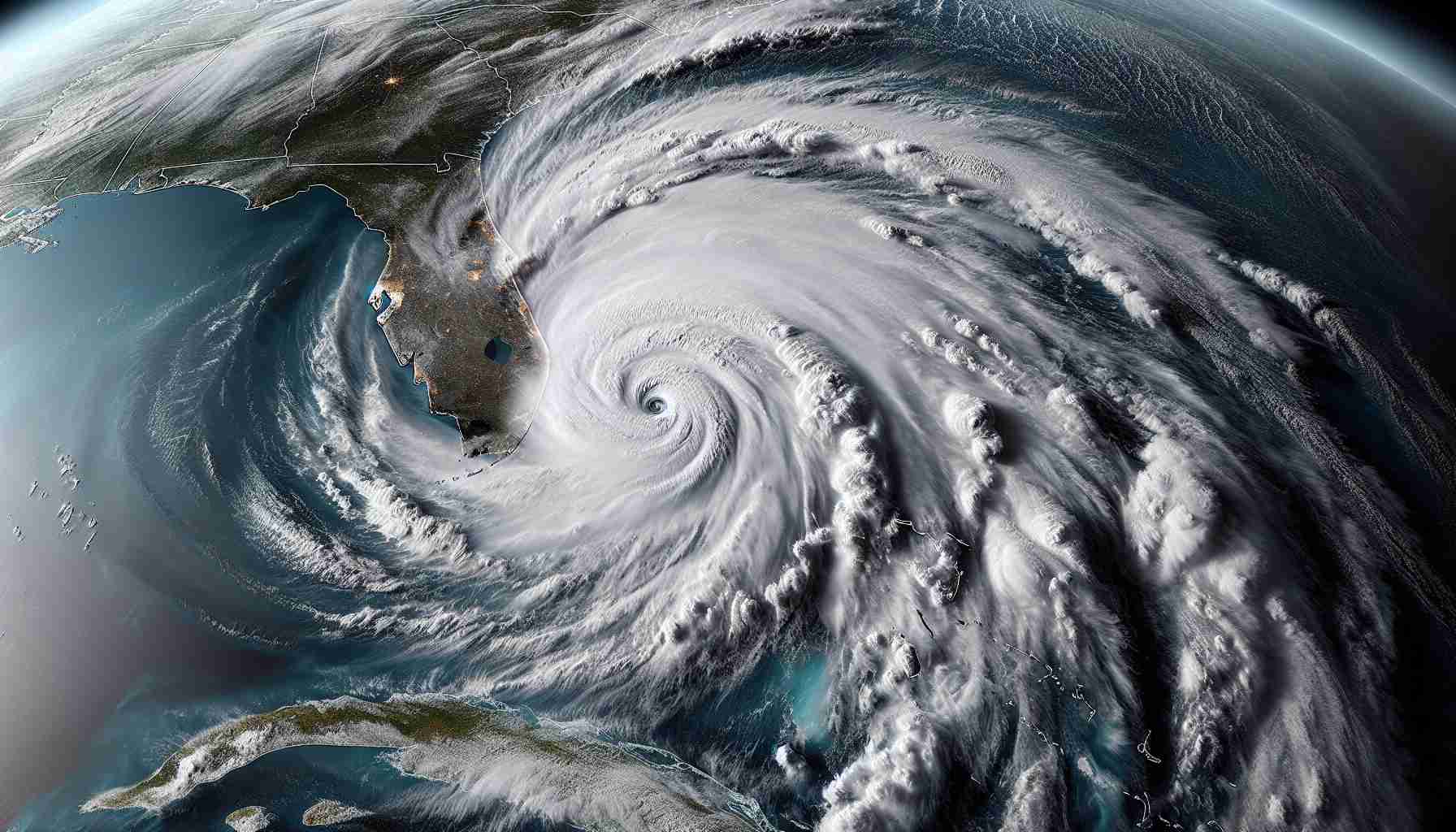
In the Gulf of Mexico, Hurricane Milton has rapidly escalated into a formidable Category 5 storm, showcasing stunning visuals captured from satellites including NOAA’s GOES-East. This alarming development follows closely on the heels of Hurricane Helene, which recently caused devastation as the most lethal hurricane to strike the U.S. since Hurricane Katrina.
The National Hurricane Center is emphasizing the severity of the situation and is advising Florida residents to take immediate precautions. Recent satellite footage illustrated Milton’s swift intensification, remarkably transitioning from Category 1 to Category 5 in just hours, marking it as one of the fastest intensification events recorded in the Atlantic.
As of October 7, Milton is identified as packing maximum winds of 175 miles per hour, with a dangerously small “pinhole eye” at its center. Such storm systems are known for their unpredictable changes in strength. Ahead of Milton’s expected landfall on the Florida west coast Wednesday evening, significant storm surges, heavy rains, and high winds are anticipated to begin impacting the area.
Residents are urged to stay informed regarding evacuation orders and monitor their local conditions closely. Emergency measures have already prompted mandatory evacuations in some areas. With forecasts predicting storm surges reaching between 8 to 12 feet, preparation is key for those in the storm’s path. For immediate safety information and resources, Floridians should consult available disaster preparedness websites.
Hurricane Milton: A Category 5 Threat Looms Over Florida
As the Gulf of Mexico bears the brunt of Hurricane Milton, a Category 5 hurricane, it triggers widespread concern among residents of Florida and neighboring states. This storm has reached unprecedented levels of intensity and has raised critical questions about preparedness and the overall impact of extreme weather events.
What are the key facts about Hurricane Milton that residents should know?
Milton has rapidly intensified, reaching maximum sustained winds of 175 mph. This escalation in strength is notable not only for its speed but also for the small size of its “pinhole eye,” a feature associated with extreme hurricanes. These hurricanes are often prone to sudden fluctuations in intensity, which makes forecasting their impact challenging. The storm is projected to deliver heavy rainfall, storm surges, and sustained winds that can lead to life-threatening conditions.
What are the crucial questions to consider during this time?
1. What precautions should residents take?
Residents need to heed evacuation orders and prepare emergency kits, including food, water, medication, and essential documents.
2. How can they stay updated on the storm’s path?
Local news channels, the National Hurricane Center’s website, and social media platforms provide up-to-date information.
3. What should residents know about insurance and recovery efforts afterward?
It’s essential for residents to review their insurance policies before the storm strikes, ensuring they are covered for flood and wind damage. Plans for recovery and rebuilding will depend promptly on assessment dealings through FEMA and local agencies.
What challenges and controversies arise during such storms?
One significant challenge is the effectiveness of evacuation routes and shelter availability, as these are often overwhelmed during high-stakes hurricanes. Additionally, there are ongoing debates surrounding climate change and expert predictions about increasing hurricane intensity and frequency. Local governments also face criticism over their readiness and communication strategies before and during the storm.
What are the advantages and disadvantages related to storm preparedness and response?
The advantages of preparedness initiatives include saving lives, reducing property damage, and maintaining community resilience. Emergency services prepared for disasters can mitigate the impact. On the downside, insufficient resources, misinformation about evacuation routes, and the psychological strain on residents can exacerbate the situation. The socio-economic divide also plays a role; lower-income neighborhoods may lack the means to evacuate or prepare adequately.
In conclusion, Hurricane Milton’s presence has underscored the importance of proper preparedness and community response. Knowledge and awareness are vital for survival, while proactive measures can drastically improve outcomes during catastrophic events.
For more information on disaster preparedness, visit Ready.gov where you can find resources to ensure your safety during hurricanes and other natural disasters.



